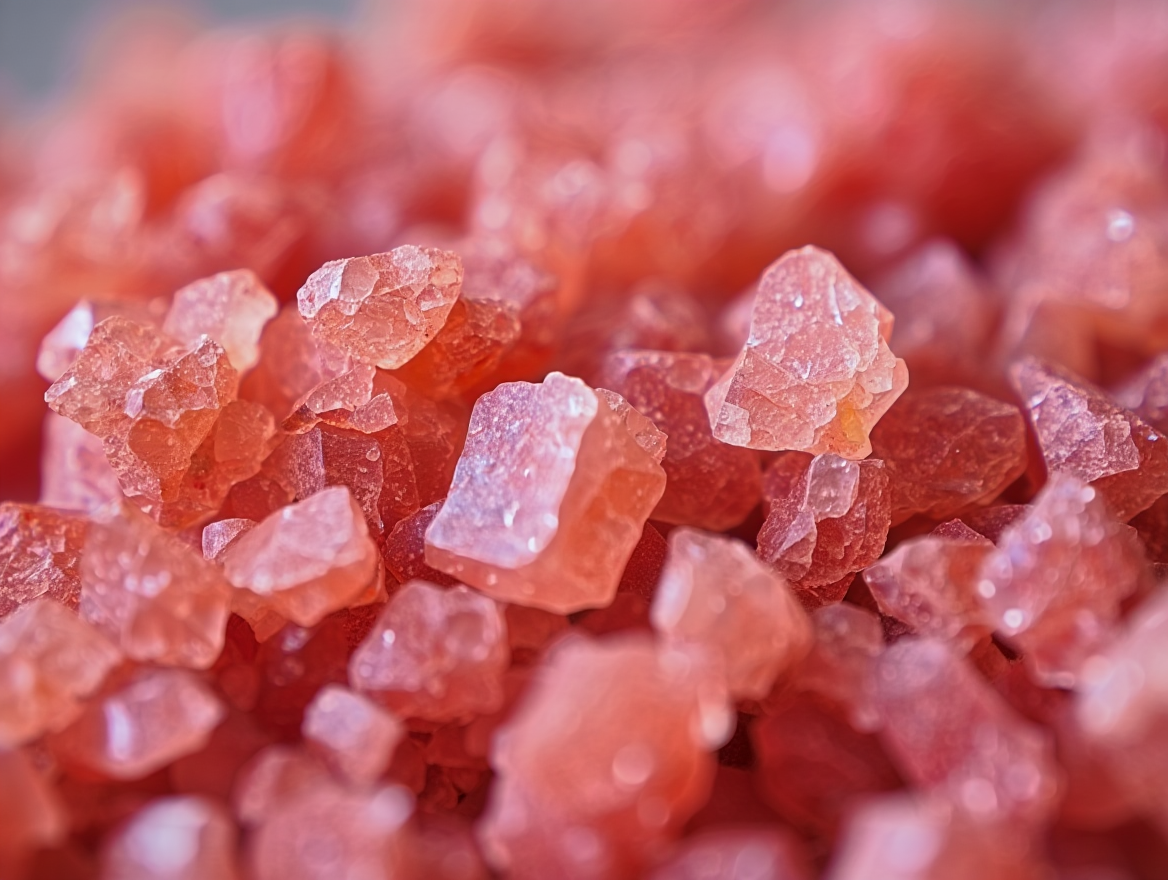
Introduction
Polyhalite (K₂Ca₂Mg(SO₄)₄·2H₂O) is a naturally occurring mineral that delivers four essential nutrients in a single product:
- Potassium (≈14% K₂O)
- Sulphur (≈19% S)
- Calcium (≈12% CaO)
- Magnesium (≈6% MgO)
Its appeal lies in being a low-chloride, multi-nutrient fertilizer that requires minimal chemical processing. Unlike MOP (KCl), which supplies only potassium, polyhalite provides a broader nutrient profile in a single application.
History & Development
Though known geologically for over a century, polyhalite’s use as a fertilizer is relatively recent. Interest surged in the 2010s when Sirius Minerals (later acquired by Anglo American) began developing the world’s largest polyhalite mine in North Yorkshire, UK.
ICL (Israel Chemicals) has also mined polyhalite from the UK since 2011, marketing it as Polysulphate. Anglo American’s Woodsmith project, once operational, is expected to be a game-changer in supply volumes.
Production Process
Polyhalite is mined from deep underground evaporite deposits and requires minimal processing compared to synthetic fertilizers.
Steps:
- Mining: Extracted via deep shafts (e.g., North Yorkshire, UK).
- Crushing & Screening: Processed into granules for agricultural use.
- Marketing: Sold as “Polysulphate” or blended into NPK formulations.
No chemical synthesis is needed, giving polyhalite a strong sustainability narrative compared to highly processed fertilizers like urea or DAP.
Global Supply & Trade
Key Producers
- ICL (UK): Produces Polysulphate from Boulby Mine.
- Anglo American (UK): Developing the Woodsmith Project, potentially the largest polyhalite mine globally.
Key Markets
- Europe: Early adoption in high-value crops and organic farming.
- South America: Growing demand in Brazil for soybeans and sugarcane.
- Asia: Uptake in horticulture and plantation crops.
Applications
- Horticulture & High-Value Crops: Fruits, vegetables, and nuts benefit from low-chloride nutrition.
- Plantations: Oil palm and sugarcane respond well to sulphur and potassium.
- Organic farming: Accepted in many organic standards due to natural origin.
- Blends & NPK Compounds: Used as a multi-nutrient base material.
Market Economics
Polyhalite’s market is still nascent, with limited global benchmarks.
- Pricing: Typically at a premium to MOP, closer to SOP, justified by its multi-nutrient profile.
- Constraints: Logistics (deep mining costs, transport), limited supply base.
- Opportunities: Branding and positioning as a “sustainable” fertilizer.
Why Polyhalite Matters
- Multi-nutrient value: Supplies four essential nutrients in one.
- Low processing footprint: Minimal chemical processing boosts sustainability appeal.
- Differentiation: Provides a marketing edge for growers targeting high-quality produce.
- UK-based reserves: Diversifies supply away from Canada, Russia, Belarus dominance in potash.
Sustainability & Risks
- Mining depth & cost: Extraction requires very deep shafts, raising costs and risks.
- Nutrient concentration: Lower K₂O concentration than MOP or SOP means higher application rates.
- Adoption challenge: Farmers must be convinced of its value versus conventional fertilizers.
- Market dependence: Success depends on branding (e.g., “Polysulphate”) and acceptance in global markets.
Mitigation
- Education campaigns on agronomic benefits.
- Targeting high-value crops first where ROI is clear.
- Leveraging sustainability certifications and organic approvals.
Future Outlook
- Anglo American’s Woodsmith Mine: Once operational, could transform supply and scale the market.
- Sustainability positioning: Increasingly attractive as fertilizer buyers seek lower carbon, lower processing options.
- Adoption curve: Likely to grow in specialty crops first, with broader adoption if economics improve.
- Competition: Will not replace MOP or SOP, but could carve out a significant niche as a premium, sustainable fertilizer option.
In short: Polyhalite is not yet a bulk commodity like MOP or DAP, but its unique nutrient profile and sustainability credentials give it real potential in the fertilizer mix. If Anglo American successfully scales production, polyhalite could move from niche product to a mainstream supplement in global fertilizer markets.




